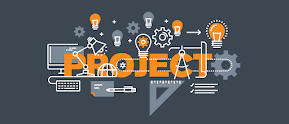REPORT
ON YOGA WORKSHOP

Ashtangas:
The eight elements of yoga are yama, niyama, aasana, pranayama, pratyahara,
dharana, dhyana and samadhi. Yoga practices that man grows from the lowest
stage to the highest stage by controlling his life through these eight
exercises. Yamam = self-control: It's
spreading the power of the mind in the right direction. For this to be possible, non-violence, truth,
asceticism, celibacy and abstinence are required. Niyama = purity of body,
happiness, penance, self-study, devotion to God. Aasana = technical exercises
to be performed for the health of the body. What is being done here is to
control the body in order to control the mind. This includes a variety of
sports. These are known as yogasanas.
Pranayama
= Pranayama is the regulation of breathing patterns. Pratyaharam = to turn the
senses away from their subjects. Prathyakara = perception: concentration of the
mind is known as perception. Dhyana = meditation; it is the unification of this
concentrated mind. Samadhi is the attainment of complete enlightenment through
meditation.
In the afternoon session he taught us different aasanas and pranayamas like soorya namaskaram, sitting positions like vajrasana, analoma, viloma, trikonasana, shadbathasana, gomukhasana and so on. This practice was long for about 2 hours. Sandra P. Sathyan of natural science option gave vote of thanks. Yoga workshop was a good experience to me.

Report on YOGA DEMONSTRATION
As a part of B.Ed curriculum, we conducted a
yoga demonstration program on 4th February 2022 in our college. The program was
evaluated by Shri Ramesh sir, our physical education trainer. Everyone gathered
in our seminar hall and students demonstrated yoga asanas on the stage with a
small description about the aasana.
I
demonstrated two aasanas. First one was Ardhakandhi chakrasana. It is also
called half lateral wheel poster.
STEPS:
·
Stand in the erect position
· Slowly rise your right hand vertically
above our head while breathing in. Stretch the hand further with full
inhalation
·
Now slowly bend your body towards left
side while exhaling.
·
Maintain
normal breathing in the final poster. Maintain the poster about 30 seconds.
·
While inhaling come up and with exhalation
slowly bring down the right hand down.
·
Repeat
the same on the other side.
NOTE: Pull
the body up from the waist before and after going to the pose. Do not allow the
hunk to tilt front or back. Bend laterally. Those who have backbone issues or
spinal issues, with the consultation of a doctor can do this aasana.
BENEFITS
·
Helps in the respiratory functioning
·
Hip joints and spinal cord become flexible
·
Excess fat around the waist reduces.
2.
The Next Aasana Was PARVATHASANA.
STEPS:
·
Sit straight up in Dandasana position with
legs stretched in front of you and hands kept freely besides the body.
·
Now,
sit in the action of padmasana means that your right leg is on the right thigh.
(cross legged pose).
·
After this, inhaling slow and deep about 3
seconds and join the palms in the namaskara mudra and stretch the hands upwards
over the head.
·
Now pull the body and hands well upwards
with keeping your hips on the floor and feel that deep stretch in the body.
·
Maintain
the final pose for 20 to 40 seconds.
·
With the breathing normally and then
release the pose and slowly return to the starting pose.
NOTE: when
you do this aasana, you should not be bowed down at your hands. Keep your waist
and hand fingers straight. During practice if you find any pain or discomfort
please exit the pose and ask for the expert’s guidance and doctor’s advices.
BENEFITS
·
The health benefits of parvathasana is
improving body balance and postures.
·
Parvathasana also removes tension in the
shoulders and back
·
It is very effective for the strength of
the shoulders and the power of the legs also increase.






I'm grateful for you sharing this blog. Let me introduce you to fitnesscareguide.com, your ultimate online source for comprehensive insights into fitness and overall well-being. Explore a world of wellness with us!
ReplyDelete